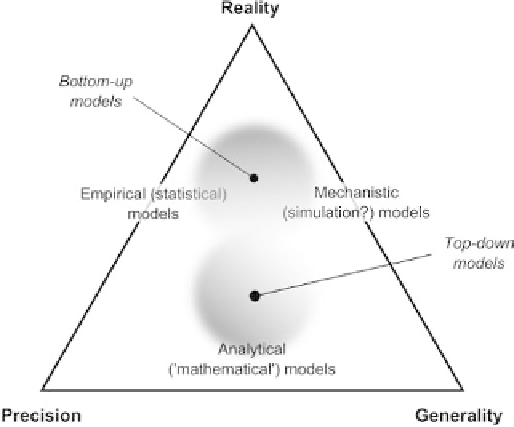Geoscience Reference
In-Depth Information
exercise suggests that although the environment may well have been the key control
on the socio-environmental dynamics of this system, outside factors, such as longer-
distance familial or other social ties, also infl uenced the Anasazi's behaviour, and
may explain the total abandonment of the landscape that the model fails to
predict.
Putting it all together
The examples discussed above lead to a series of questions about model representa-
tion and evaluation. All of the case studies are concerned with the broad question of
what drives LUCC in some landscape, but the various models vary markedly in how
they conceptualise and represent the landscape and the processes driving change in
it. This variety suggests that there is not a single 'best' modelling approach. Rather
some approaches will be more or less useful than others depending on the task at
hand. Whatever their purpose, all models must wrestle with the challenges of balanc-
ing detail with parsimoniousness and determining the appropriate spatio-temporal
scales to consider. In a now famous paper, Levins (1966) suggested that all model
builders are forced to trade-off generality, precision, and realism. He believed that,
at best, a single model could only achieve two of those three criteria. Arguably, the
different approaches to modelling listed in table 20.1 and described above each focus
on a different one of Levin's objectives (fi gure 20.3). While recognising that the
boundaries are blurred, it might be said that analytical models focus on generality
and precision, empirical models on precision and reality, and (mechanistic) simula-
tion models on generality and realism (Guisan and Zimmermann, 2000).
The case studies also highlight the different approaches taken to model analysis
and evaluation. The analytical models described by Bockstael (1996) and Irwin and
Figure 20.3
A classifi cation of methodological approaches to modelling in relation
to the 'goal' of the modelling activity (after Guisan and Zimmerman, 2000); repro-
duced with kind permission of Elsevier Press.






